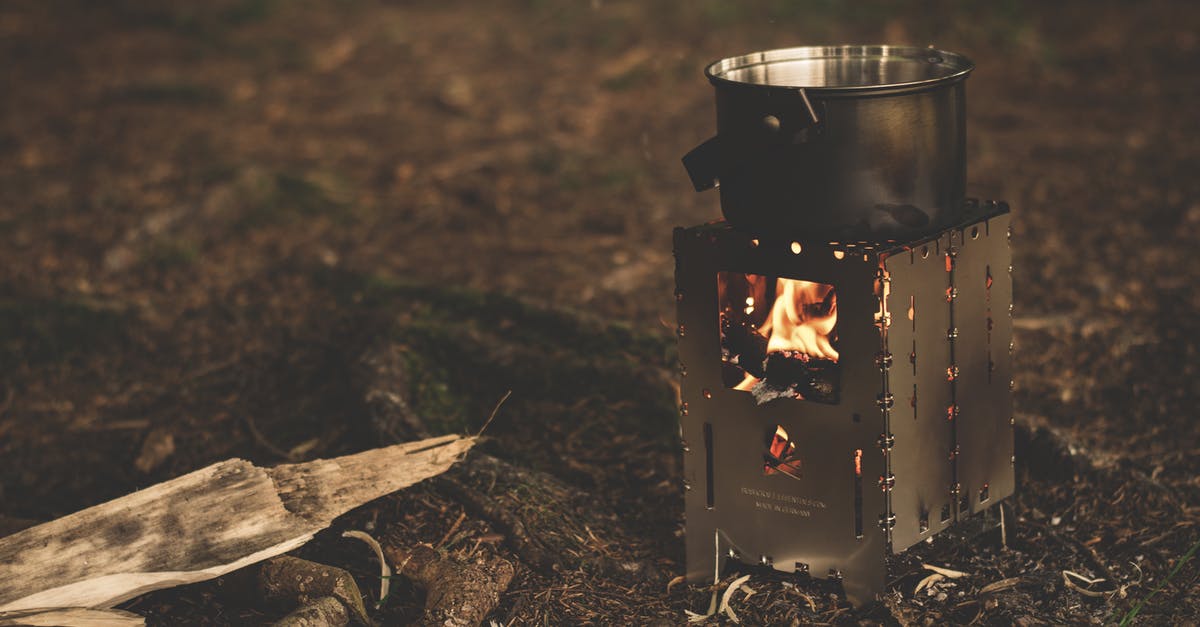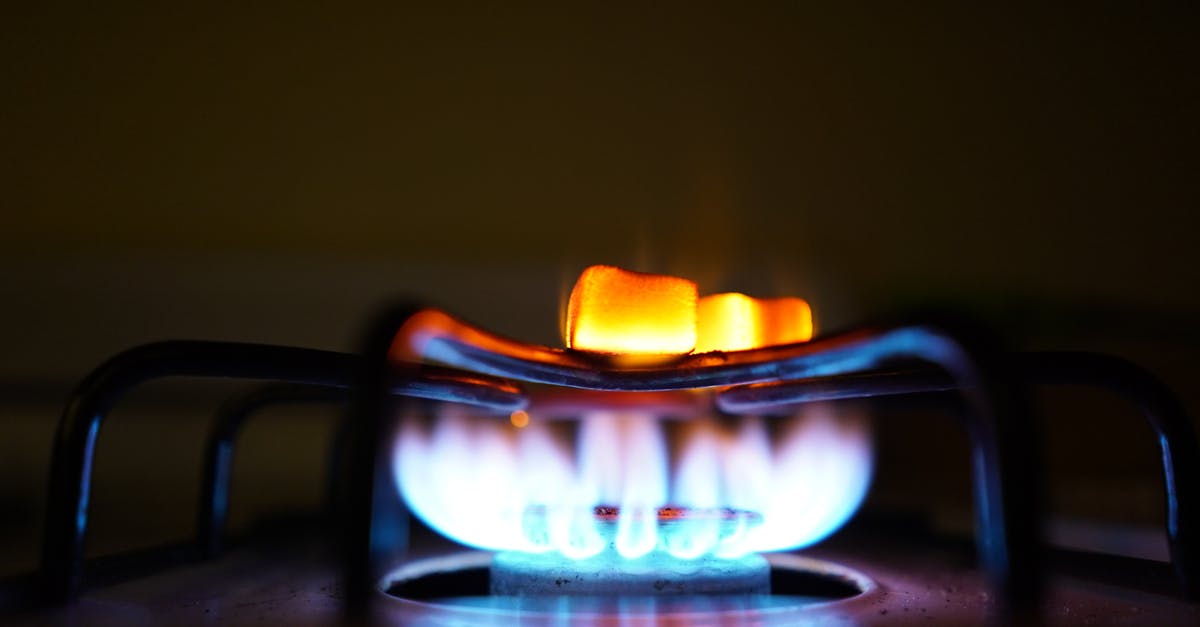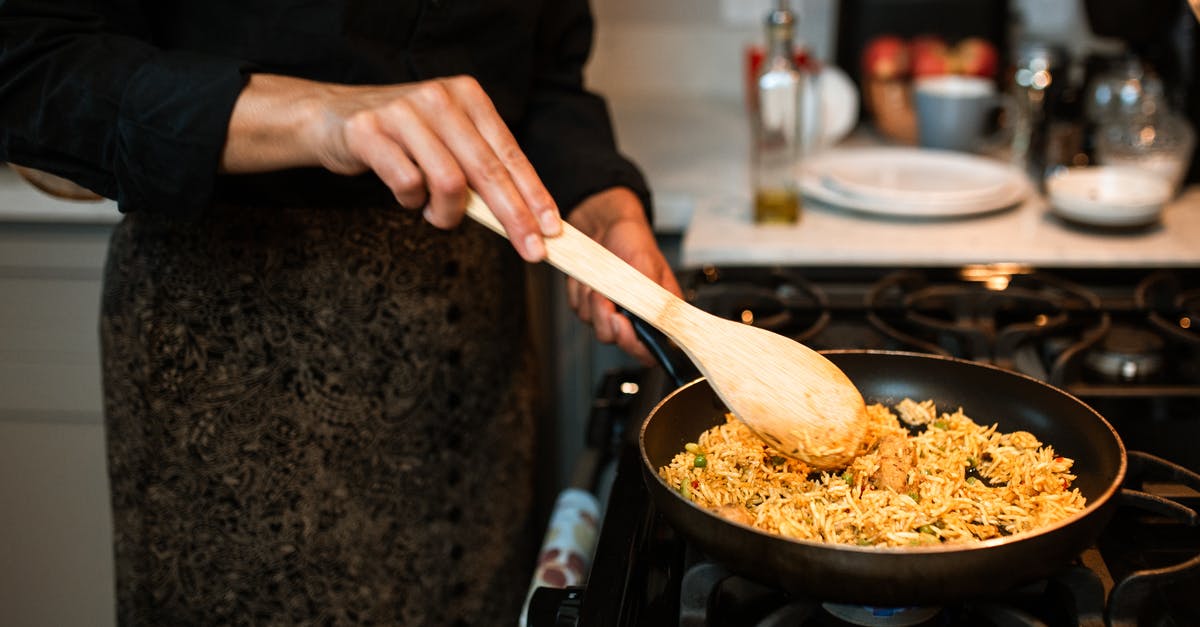Stove-steamed rice gets burnt on bottom

I've followed one of those countless videos on YouTube about steam-cooking rice on stove, particularly this one: How to Cook Rice Perfectly Every Time | Stovetop Method | Easy Asian Cooking But three out of three times rice on the bottom burnt.
Cooking procedure:
- Put rice in a pot and rinse twice
- Cover rice with 2-3 cm water
- Hard boil until water surface hits rice
- Reduce heat to minimum, cover the pot and wait 15 min
- Turn off heat and wait 5 min
- Remove cover, fluff the rice and wait 1-2 min
- ???
- PROFIT
Some more details:
- Rice that did not get stuck to the bottom was delicious
- Rice that did get stuck was not black or even brown
- While boiling excess water out (when I first put it on the stove) I had to mix it with a spoon because some rice kept sticking to the bottom
Best Answer
I can see flaws in the method. Adding water by 'depth' is pretty inaccurate unless you use the exact same rice quantity in the exact same pan as the recipe author. Also, bringing it slowly to the boil like porridge is very inaccurate for your timings.
Let's try it a slightly different way. Use ratios & a flash-boil.
There's no absolutely ideal 'works for everybody' ratio as it depends on pan thickness, tightness of lid & stove heat. You'll end up between 1:1.5 and 1:1.75
Though this takes a lot of text to explain, it's actually really, really simple to do & once you have your ratios right for your kitchen, it will 'just work' every time.
Put the kettle on.
(This works best if you live in a 240v country, otherwise you might have to wait a few more minutes before you start 2;)Using a small-ish saucepan with a tight-fitting lid & the heaviest base you have, pre-heat at full power as the kettle's coming to the boil. The idea of this is that the pan is hotter than the water as it goes in… but not on for so long it's glowing, or you can smell burning teflon;)
Add 1 cup of rice to the pan as it's heating (cup, mug, measuring jug, doesn't matter so long as you use the same measure for the water. That way we're working percentages/ratios not inches). Don't bother to pre-rinse unless your rice is particularly dusty. Supermarket rice really doesn't need it these days, & pre-rinsing will change the flash-boil reaction.
Add salt now if you want salt.Add a cup and two-thirds (middle of your ratio spectrum) boiling water. The water & rice combo will immediately flash-boil almost out of the pan. Immediately drop the heat to minimum (assuming gas, or take the pan off the ring for a few seconds if electric or anything not instant) Stir once with a spatula, just enough to know the rice didn't clump, which it shouldn't if the water flash-boils on contact.
Put the lid on. (First time, until you get used to this, keep an eye on it to make sure it's not going to boil over as the initial heat drops away)Simmer for 15 mins, without lifting the lid to check.
Don't be tempted to lift the lid to see if it's done…
This is a Schrödinger/Heisenberg* method - see below;)
This depends on your pan thickness & how low your ring goes. You learn this through repetition; after that, time it.
While you're learning the timing, then you'll have to just lift it slightly & briefly every minute from 12 or so. Once you've got the ratios for your pan/stove combo you don't do this.
Whilst you're learning at the lid lift stage, you're listening for a 'crackling' sound. That's the indicator your very last bit of water is evaporating off the pan base.Switch off the gas (or for electric switch off & move the pan to a cold ring)
Leave 15 mins more. Don't lift the lid at all.
We don't need Schrödinger for this bit - the cat is alive;)'Fluff with a fork' as they always say - or if you got it just right, a quick once-round with a spatula will do it. it won't have stuck.
Profit… or adjust your water ratio/timing/heat for next time.
A lot of this is learning your specific pan/stove. If your ring is hot or your pan is thin, you have to adjust your water ratio up slightly, so you arrive at the 15 minute mark as it crackles. This can mean you end up with a ratio somewhere between 1:1.5 & 1:1.75 If you err, err on the side of dryer.
Glass-lidded pans can take a lot of your early guesswork out of it, as you can see what's going on.
*Schrödinger's cat is a famous thought experiment. You don't know if the cat is alive or dead until you open the box.
We're additionally hampered in this by Heisenberg's Uncertainty Principle - that by the mere act of observing an experiment, you change the result.
Hence, you cannot know if it is done until you lift the lid… but by lifting the lid to see if it's done, you change the time it will take & the amount of water required for it to be done.
Pictures about "Stove-steamed rice gets burnt on bottom"



Quick Answer about "Stove-steamed rice gets burnt on bottom"
If the pot itself is too thin, the heat from the stove can easily overcook the rice on the bottom of the pot. Using a thicker, heavier-bottomed cooking vessel could solve your burned stovetop rice issue. It could also be that you've turned the burner on too high.How do I keep the bottom of my rice from burning?
The Problem: Burnt RicePut your burner on the lowest setting\u2014the steam should be doing all the work, not the burner. Also check that you're using a heavy-bottomed pot, like this sturdy saucepan\u2014a thin pot will expose the grains to too much direct heat.How do you cook rice on the stove without burning it?
Wide, shallow pans tend to cook rice faster and more evenly than deep ones. The lid of your pot needs to fit snugly or else you'll lose too much needed cooking heat. After rice has cooked on the stove, remove from heat and keep the lid on. This allows the rice to steam and finish cooking properly.Why does rice stick to the bottom of my rice cooker?
Prevent Rice Sticking to the Rice CookerFriction rubs some of the starch from the rice as it's stored and shipped, and this powdery coating of starch makes the rice stickier. As an added benefit, well-rinsed rice cooks up lighter and fluffier.What is the ratio for rice to water in a rice cooker?
The general ratio of water to rice in a rice cooker is 1:1. That means 1 cup water to 1 cup rice.How to Fix Instant Pot Scorching / Burning rice on the bottom of the pot
More answers regarding stove-steamed rice gets burnt on bottom
Answer 2
I use a relatively heavy bottomed pot. This method is simple and less fuss than most, and my rice does not stick to the pan:
- put 1 something (I have a particular mug I always use) of rice into the pan.
- put the pan on the stove and turn the ring on high
- add 2 somethings of tap water
- put the lid on
- do something else in the kitchen like making whatever you intend to serve with the rice
- when the rice boils (which you may notice by it boiling over, in which case take the lid off) turn it to min
- after a minute if you took the lid off you can put it back on
- in about 15 minutes the rice will be perfect. You can check by looking to see if there is still water down at the bottom of the pan. Yes, checking will let out some steam, but it's ok, even if you check twice or three times, and soon you won't need to
I was taught to let it sit off the heat and various more complicated things, but I just don't and my rice comes out fine.
Sources: Stack Exchange - This article follows the attribution requirements of Stack Exchange and is licensed under CC BY-SA 3.0.
Images: Lum3n, suludan diliyaer, RODNAE Productions, Angela Roma
